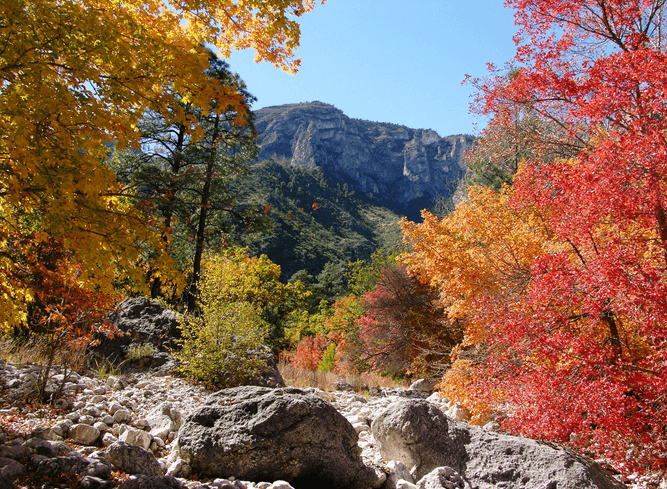Photo via http://ow.ly/6HmQ30fj3cV
At this time of year, the leaves on the trees in my area seem to change color overnight. The brilliant yellow, orange, and red leaves are a pleasure to see. Not surprisingly, many people travel to the northeastern part of the United States to go leaf-peeping. Living here in New York City, I only have to walk outside to see the changing leaves. In fact, I have a mature sugar maple in my neighborhood that inspires me with its yellow-orange symphony of leaves. Today, my post is all about trees and why their leaves change color in the fall.
What Causes Leaves to Change Color?
In the summertime, the leaves on the trees are green due to the chlorophyll inside them. Photosynthesis occurs in a leaf when the chlorophyll absorbs energy from sunlight. As winter approaches, the days become shorter and the sunlight is less intense. This causes photosynthesis to slow down, then stop. A tree’s leaves have made all the food needed for the winter months, so the chlorophyll (the green) in a leaf starts to fade. The color beneath the chlorophyll is what appears in the fall.
Why Are There So Many Colors?
Different types of trees have leaves that turn different colors in the autumn. When the chlorophyll fades out of a leaf, the remaining color reflects the material inside the leaf’s structure. For example, the leaves of oak trees turn brown, revealing the waste present in the leaves. A red maple tree has bright red leaves, while the dogwood has leaves that are a combination of purple and red. The leftover glucose in a leaf combined with exposure to sunlight and cooler temperatures causes leaves to turn red or purple. Yellow and orange leaves appear after the green chlorophyll starts to fade near the end of summer. A few examples of trees with yellow foliage are the emerald elm, aspen, and golden poplar. Some trees with bright orange foliage include the sugar maple and the sassafras tree.
Foliage Facts
- Evergreen trees don’t lose their leaves or change color in the fall.
- A tree exposed to more sunlight will keep its leaves longer than a tree exposed to less sunlight throughout the day.
- A tree exposed to air pollution, water pollution, and/or dangerous chemicals is likely to be stressed and lose its leaves more quickly than a tree not exposed to those elements.
- Natural factors such as the amount of rain a tree receives can affect how quickly it loses its leaves. A well-watered tree may keep its leaves longer than one that receives a small amount of water.
- A tree exposed to a lot of wind will lose its leaves faster than one with the protection of other trees or even a tall building.
If you’re looking for the best places to go leaf-peeping, there are plenty of options. Enjoy all of the changing colors, and remember that the deciduous trees around you aren’t dying: They are only going to sleep for a while.
![[Avas Flowers] Avas Flowers](https://www.avasflowers.net/newimg/avas-logo-new.png)

